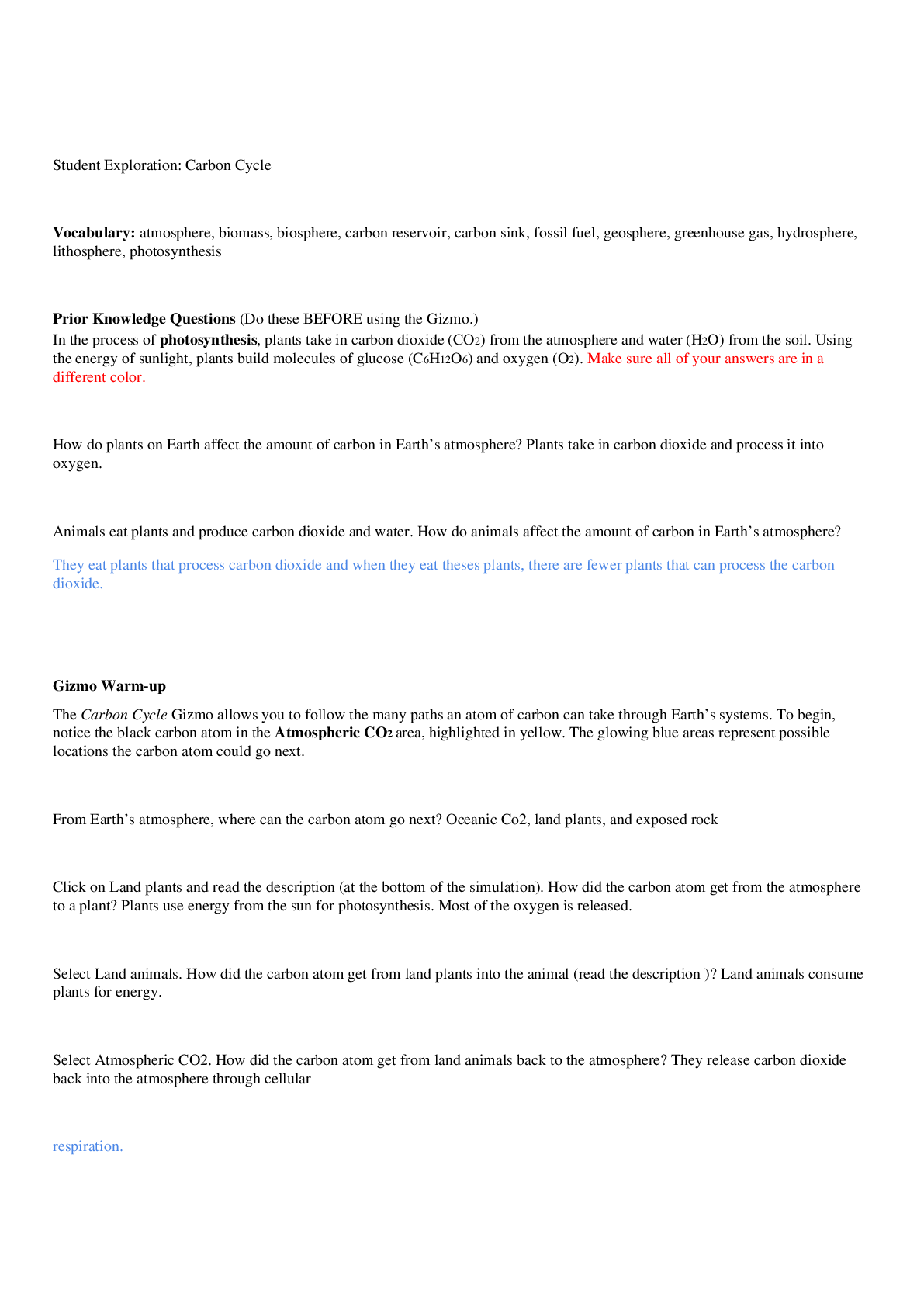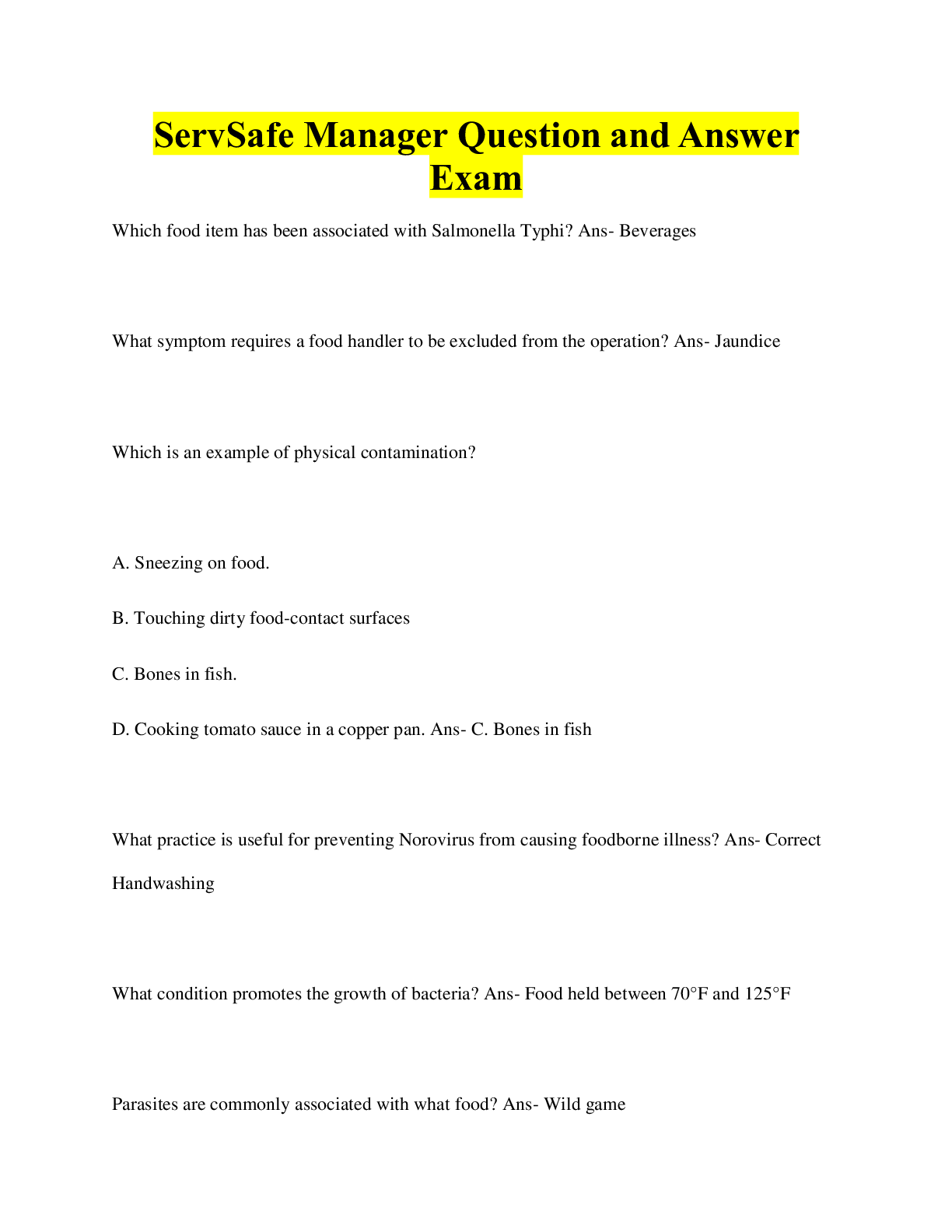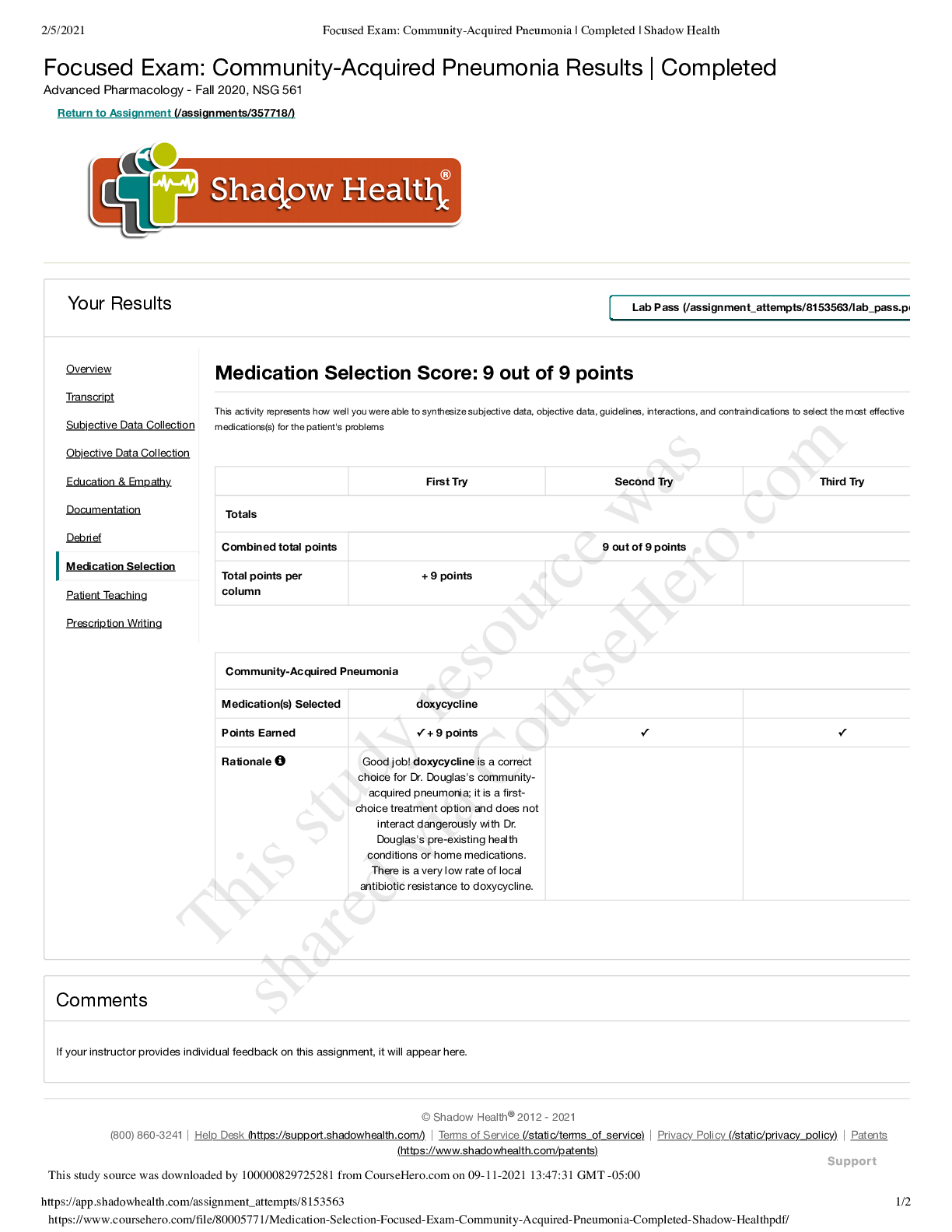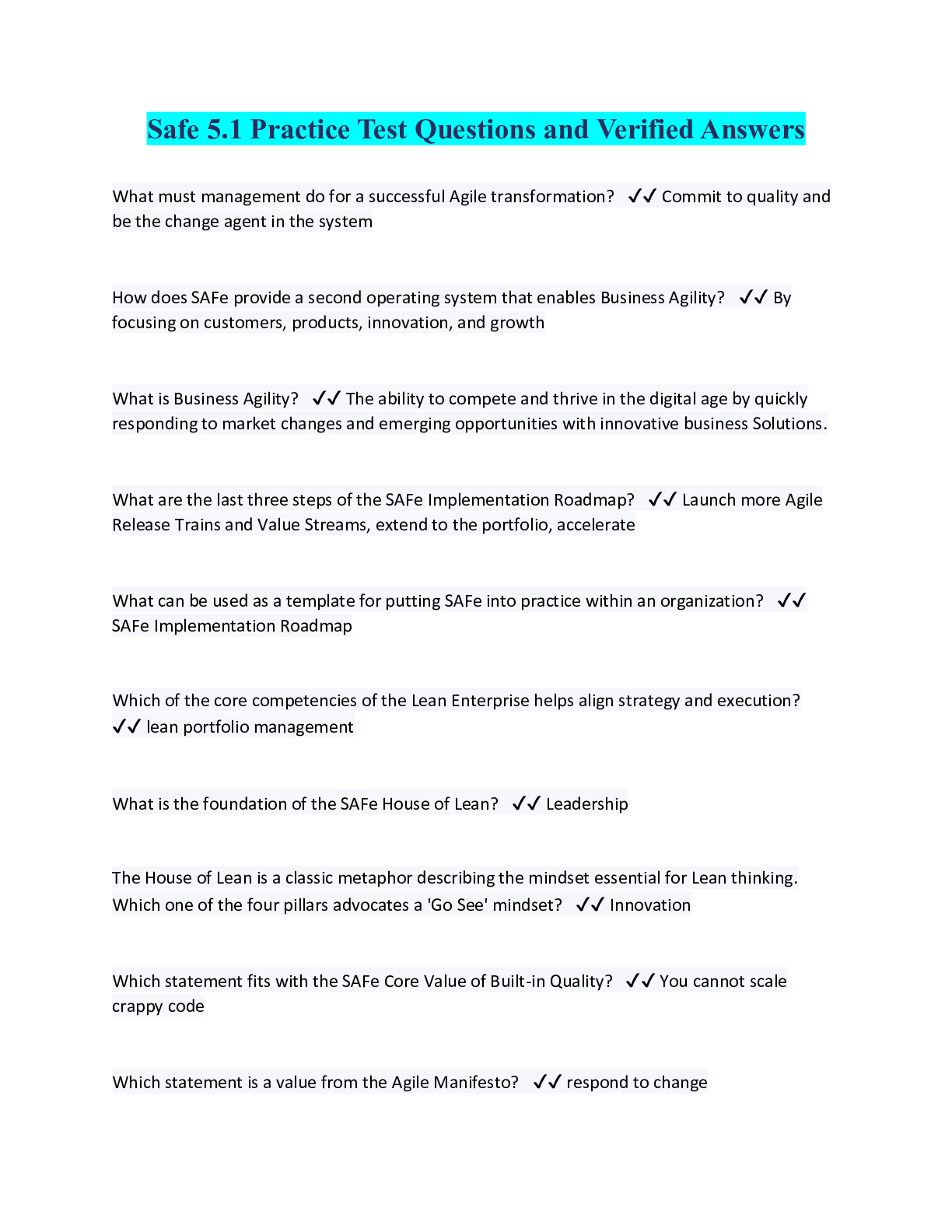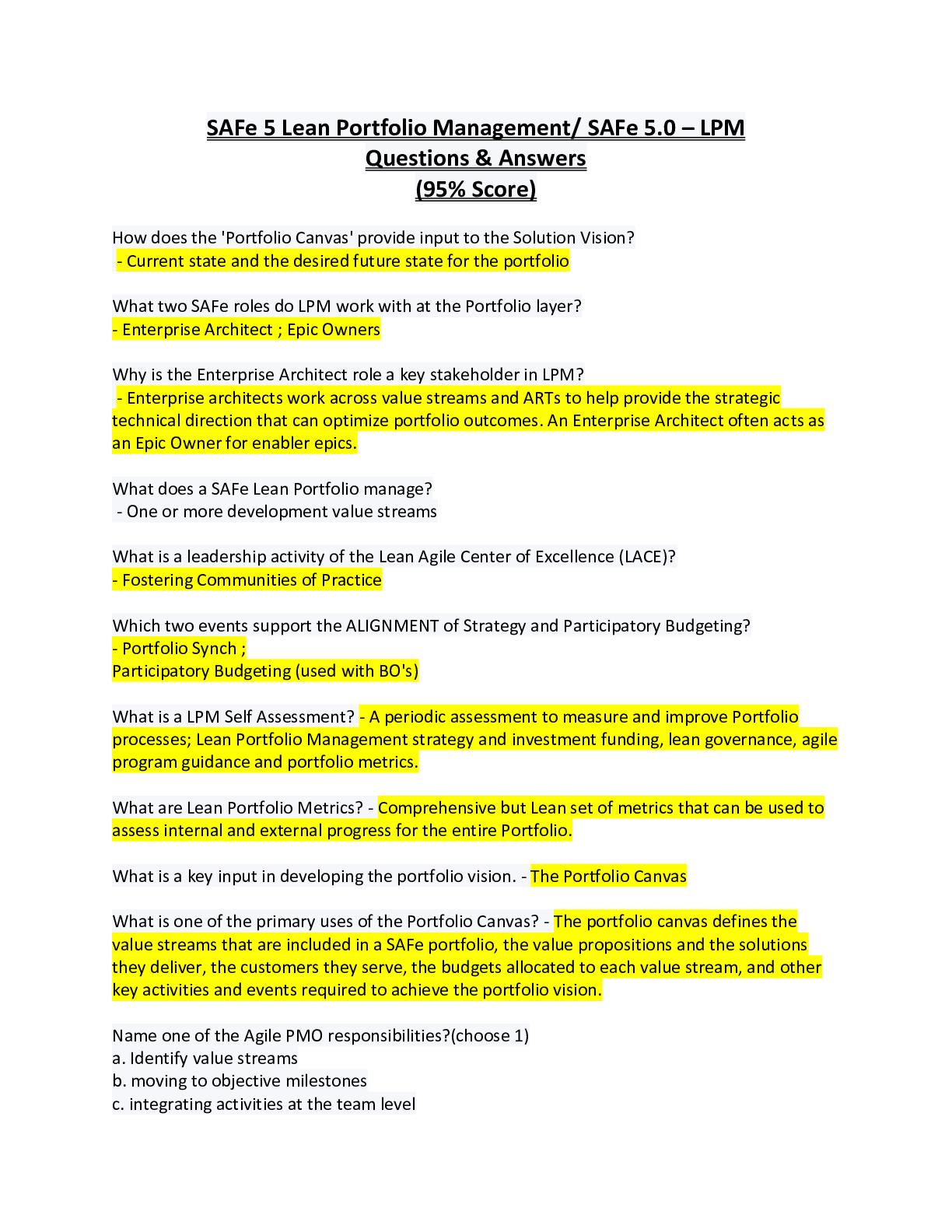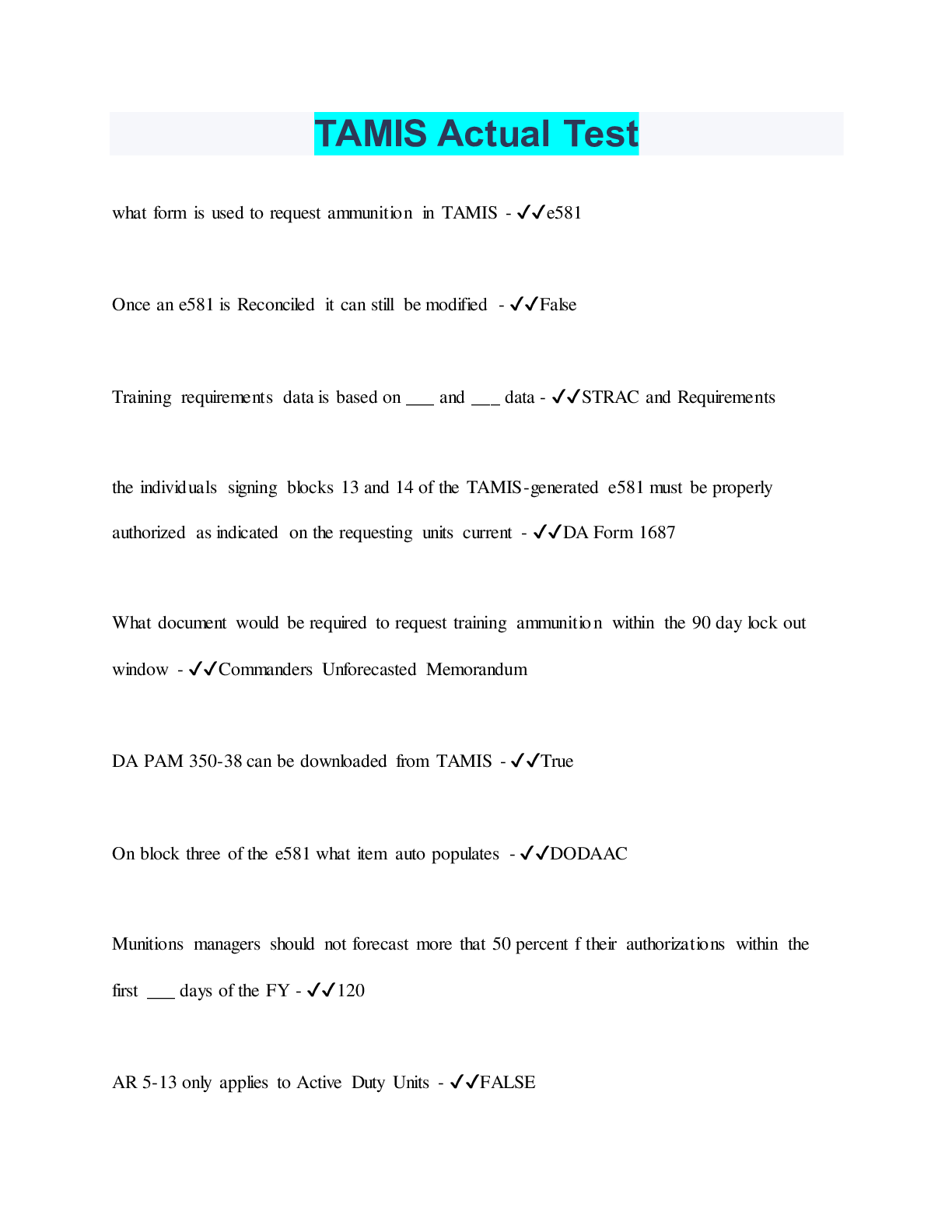SCIENCE 101 > EXAM > Gizmos Student Exploration: Carbon Cycle (answered) A+ solutions > latest fall 2021. (All)
Gizmos Student Exploration: Carbon Cycle (answered) A+ solutions > latest fall 2021.
Document Content and Description Below
Name: Date: Format responses in blue bold font. Student Exploration: Carbon Cycle Vocabulary (refer to vocab file located on the Gizmo site for definitions): Atmosphere: the gases that surround a plan... et Biomass: the total mass of a group of living things. Biosphere: living things on a planet. Carbon reservoir: a part of Earth that stores carbon Carbon sink: a carbon reservoir that absorbs carbon from the atmosphere and stores it for a long period of time fossil fuel: a fuel formed over thousands or millions of years from the remains of living organisms Geosphere: the rocky, non-living parts of a planet. Greenhouse gas: a gas in Earth’s atmosphere that absorbs and then re-radiates heat. Hydrosphere: – the water on a planet. Lithosphere: the rigid upper layer of the Earth Photosynthesis: – a process in which plants use energy from light to change carbon dioxide and water into glucose (sugar) and oxygen Prior Knowledge Questions (Do these BEFORE using the Gizmo.) In the process of photosynthesis, plants take in carbon dioxide (CO2) from the atmosphere and water (H2O) from the soil. Using the energy of sunlight, plants build molecules of glucose (C6H12O6) and oxygen (O2). 1. How do plants on Earth affect the amount of carbon in Earth’s atmosphere? 2. Animals eat plants and produce carbon dioxide and water. How do animals affect the amount of carbon in Earth’s atmosphere? 1. From Earth’s atmosphere, where can the carbon atom go next? 2. Click on Land plants and read the description. How did the carbon atom get from the atmosphere to a plant? 3. Select Land animals. How did the carbon atom get from land plants into the animal? 4. Select Atmospheric CO2. How did the carbon atom get from land animals back to the atmosphere? Activity A: Carbon pathways Get the Gizmo ready: • Click Reset. Introduction: Earth can be divided into four systems. The atmosphere is the air above Earth’s surface. The hydrosphere is composed of all of Earth’s water. The geosphere is the rocky, non-living part of Earth. The biosphere consists of all living things, including people. Some scientists use the term “anthroposphere” to describe everything made or modified by humans. Question: How does carbon move between the atmosphere, hydrosphere, biosphere, and geosphere? 1. Explore: Use the Gizmo to create a path for carbon that begins and ends in the atmosphere. Fill in the steps in the path below. Then, label each location with the system it represents. Finally, summarize very briefly how the carbon atom got to that location. Carbon path System How it got there Atmospheric CO2 Atmosphere Oceanic CO2 Hydrosphere Shells/Coral Biosphere Limestone Geosphere Lithosphere Geosphere Volcano Geosphere Atmospheric CO2 Atmosphere Scroll down the file to continue Activity A 2. Create: Click Reset. Use the Gizmo to create a path in which the carbon atom goes from the atmosphere to the hydrosphere, biosphere and geosphere. Describe each transition briefly. Atmosphere Hydrosphere Biosphere Geosphere Atmospheric CO2 Oceanic CO2 Marine Plants + Algae Sediments 3. Explore: Use the Gizmo to create three more carbon paths, each starting and ending in the atmosphere. Label each location with A for atmosphere, B for biosphere, G for geosphere, or H for hydrosphere. (You can also use P for anthroposphere if you like, or just include it in the biosphere.) Path 1: Path 2: Path 3: 4. Explain: Based on the Gizmo, explain how the following transitions might take place: A. Describe at least two ways that carbon can get from a land plant to the atmosphere. B. Describe at least two ways that carbon can get from the atmosphere to the hydrosphere. C. Can you find two ways that carbon can get from the ocean to the lithosphere? (The lithosphere is the rigid layer of the Earth, including the crust and part of the mantle.) D. Describe at least two ways that carbon can get from seashells to the atmosphere. Activity B: Human activities Get the Gizmo ready: • Click Reset. Introduction: Fossil fuels, such as coal, oil, and natural gas, formed over millions of years from the remains of ancient plants and animals. The burning of fossil fuels, as well as other human activities, increases the amount of carbon dioxide in the atmosphere. Question: How does human activity affect the carbon cycle? 1. Describe: Using the Gizmo, determine how coal and petroleum (oil) are formed. Describe the steps required to form each fuel from atmospheric CO2. Coal: Petroleum: 2. Explore: Natural gas is a mixture of methane (CH4), ethane (C2H6), and other gases. Find two ways that natural gas forms. List the steps of the two carbon pathways below: Path 1 Path 2 How is the formation of natural gas related to the formation of coal and petroleum? 3. Describe: Fossil fuels are used in many ways. Using the Gizmo, describe the main use for each fuel. Coal: Petroleum: Natural gas: In each case, what is the end product of burning the fossil fuel, and where does it go? (Activity B continued on next page) Activity B (continued from previous page) 4. Explore: Another major contribution to atmospheric carbon dioxide is the cement industry. Using the Gizmo, find a carbon atom path from the atmosphere to the cement plant. (Hint: One of the ingredients in cement is limestone.) Path: How is carbon dioxide produced in a cement plant? 5. Analyze: Click Reset, then navigate to the Land animals. Select Atmospheric CH4. A. How do land animals create methane? B. Humans raise large numbers of cattle for food. How will these herds of cows affect Earth’s atmosphere? 6. Analyze: In many tropical rainforests, people clear land by cutting down trees and burning them. After a few years, the soil runs out of nutrients and cannot be farmed any longer. How does this practice of “slash and burn agriculture” affect Earth’s atmosphere? 7. Draw conclusions: In general, how do many human activities influence the carbon cycle? Scroll down the file to complete Activity C Activity C: Modeling the carbon cycle Get the Gizmo ready: • Select the MODEL tab. Introduction: Humans have been burning fossil fuels rapidly for the past 250 years. As a result, the amount of atmospheric CO2 has increased by about 40% since the year 1800. By measuring how much carbon moves into and out of the atmosphere, scientists can predict the change in the amount of atmospheric carbon dioxide every year. Question: How can we model changes in atmospheric carbon over time? 1. Observe: The MODEL tab of the Gizmo shows a greatly simplified model of the carbon cycle. The ovals represent carbon reservoirs, where carbon is stored. The arrows represent the movement of carbon from one reservoir to another. A. What are the two major sources of atmospheric carbon? B. A carbon sink is a location that stores carbon for a long period of time. What are two carbon sinks that remove carbon from the atmosphere? C. The unit “GtC” stands for gigatonnes of carbon, where one GtC is equal to one trillion kilograms of carbon. Without making any changes to the Gizmo, list the carbon reservoirs from largest to smallest. Note: The largest carbon reservoir is actually Earth’s lithosphere, which contains about 80,000 GtC. However, there is not much exchange between the lithosphere and the other reservoirs on short time scales. 2. Experiment: If necessary, click Return to original settings. These settings approximate present-day conditions, but should not be taken as exact values. A. What is the total amount of carbon removed from the atmosphere each year by the ocean and land plants? B. What is the total amount of carbon added to the atmosphere from soil and the burning of fossil fuels? C. How much will atmospheric carbon change in one year? In 10 years? In 100 years? (Activity C continued on next page) Activity C (continued from previous page) 3. Calculate: Carbon dioxide is a greenhouse gas that helps to trap heat in Earth’s atmosphere. We need some CO2 in the atmosphere to maintain a warm planet, but excess carbon can cause considerable warming of the planet. A. What fossil fuel usage will result in no change in atmospheric CO2 each year? B. What percentage decrease in fossil fuel usage is required to achieve this goal? 4. Experiment: Using the Gizmo model, explore the following questions: A. How does increasing plant biomass (amount of plants) affect atmospheric CO2? B. How does increasing oceanic CO2 intake affect atmospheric CO2 and oceanic CO2? As carbon dioxide is absorbed by the ocean, the ocean becomes slightly more acidic. This could make it harder for many organisms to build their shells and skeletons. The consequences of ocean acidification are not yet fully understood. 5. Infer: Click Reset and Return to original settings. Suppose we completely stopped burning fossil fuels immediately. How many years would it take to return to atmospheric CO2 levels from the year 1800, about 600 GtC? Use the Gizmo to find the answer. 6. Think about it: Since hard-shelled organisms evolved about 550 million years ago, billions of tons of limestone rock have been produced from their shells. Limestone is made of calcium carbonate, with the formula CaCO3. Based on this, how do you think the amount of atmospheric CO2 has changed in the last 550 million years, and how has this affected Earth’s climate? Explain your answer. Complete the five-question quiz for this activity located under the Gizmo screen on the ExploreLearning website. Paste a screenshot of your quiz results below. Your score will be a part of your final grade for this assignment. [Show More]
Last updated: 1 year ago
Preview 1 out of pages
Instant download

Instant download
Reviews( 0 )
Document information
Connected school, study & course
About the document
Uploaded On
Aug 19, 2021
Number of pages
Written in
Additional information
This document has been written for:
Uploaded
Aug 19, 2021
Downloads
0
Views
4


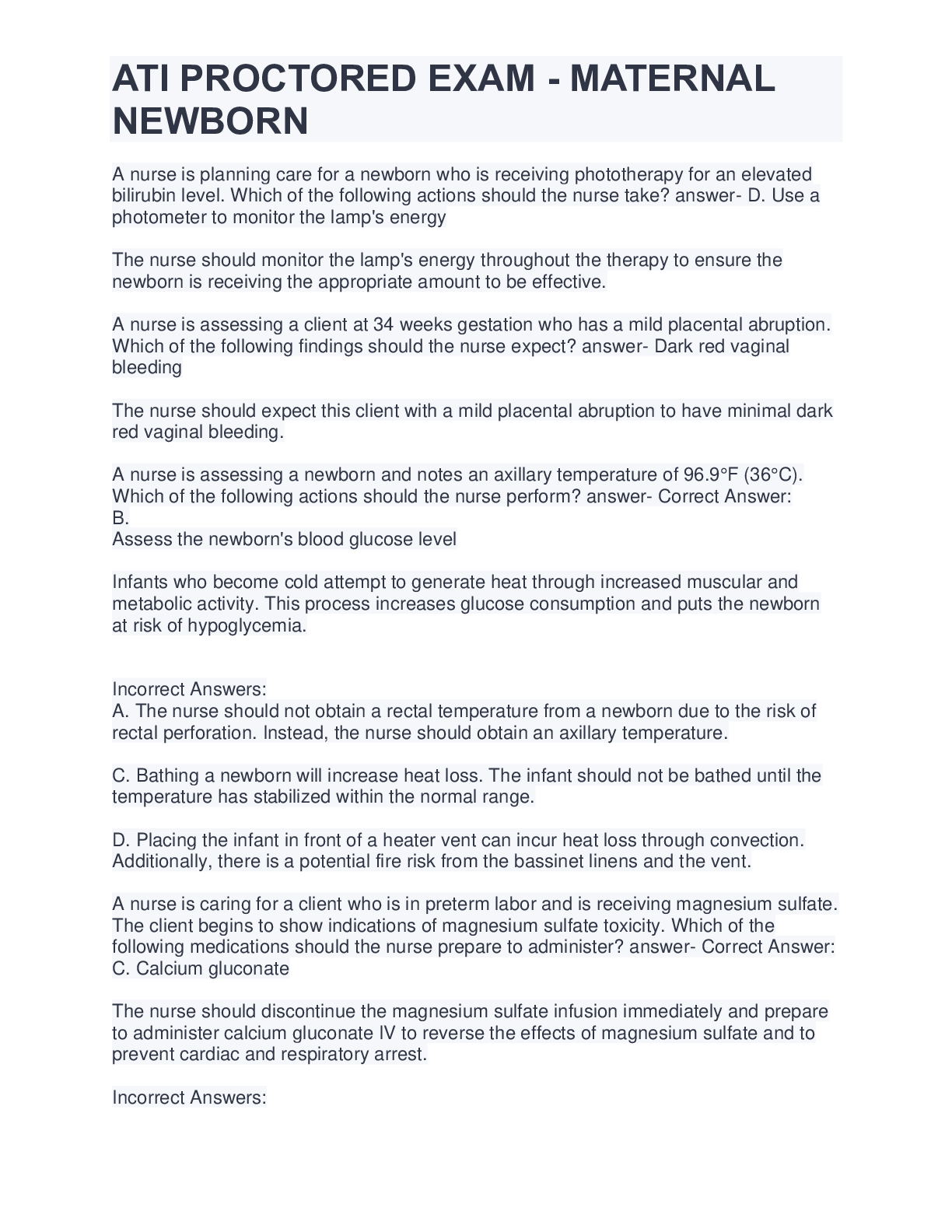


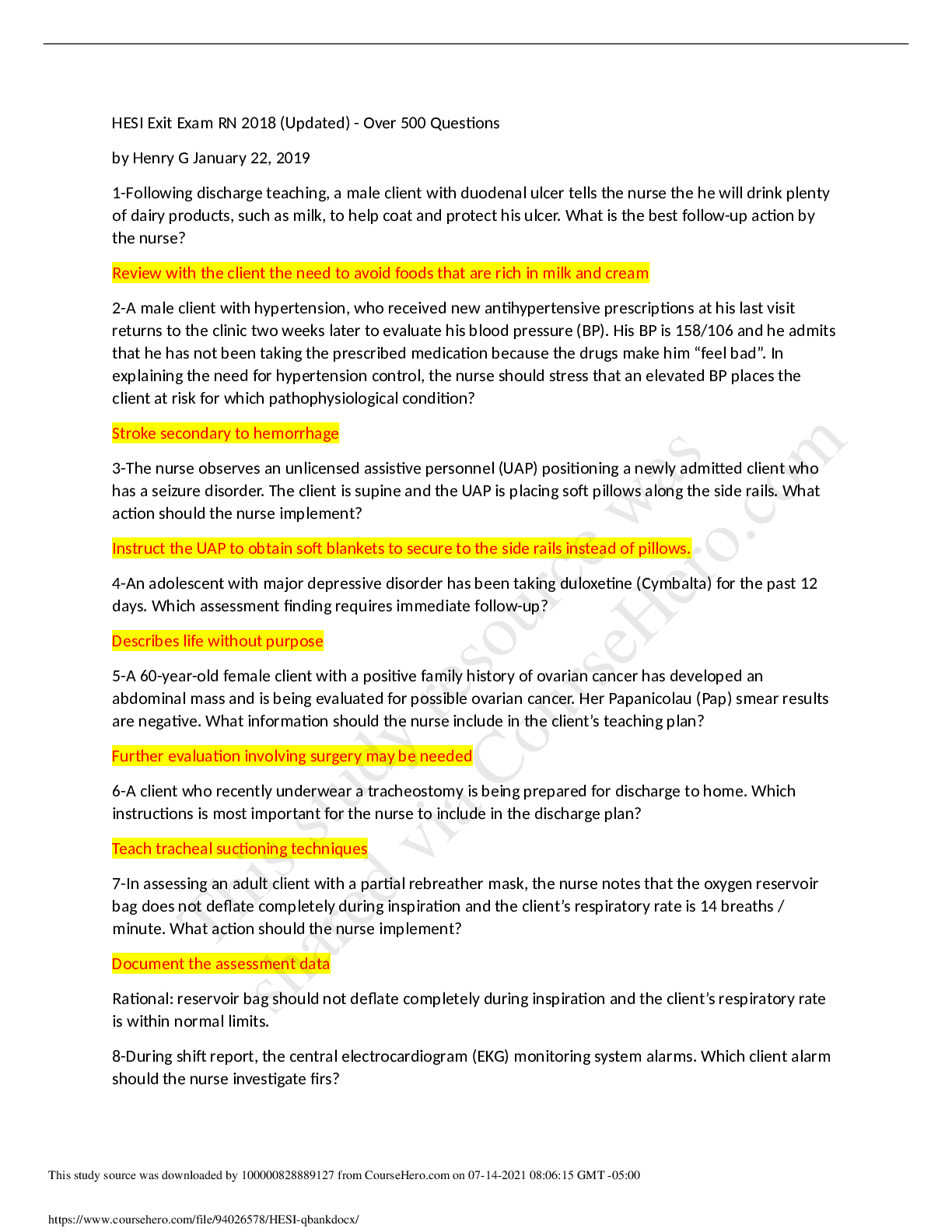
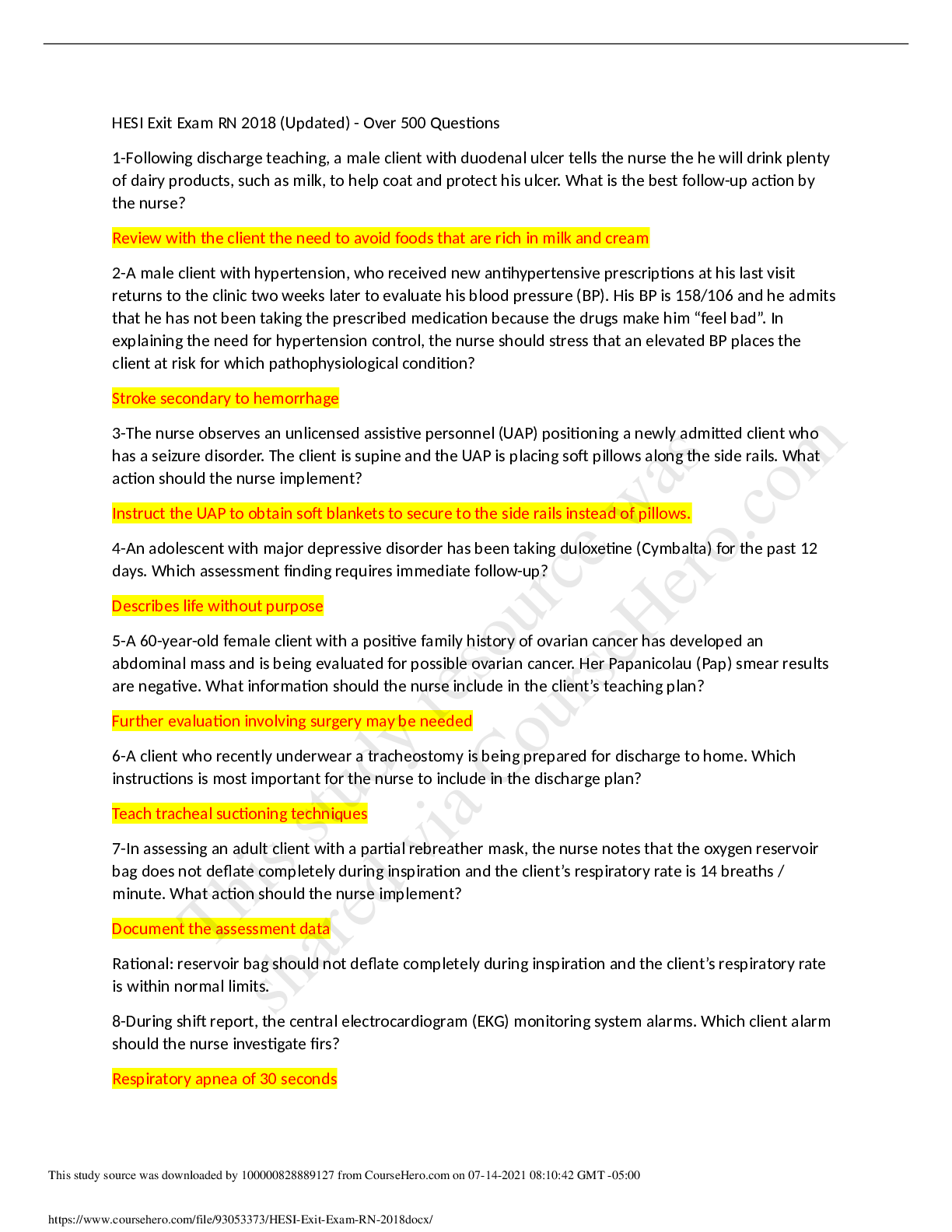

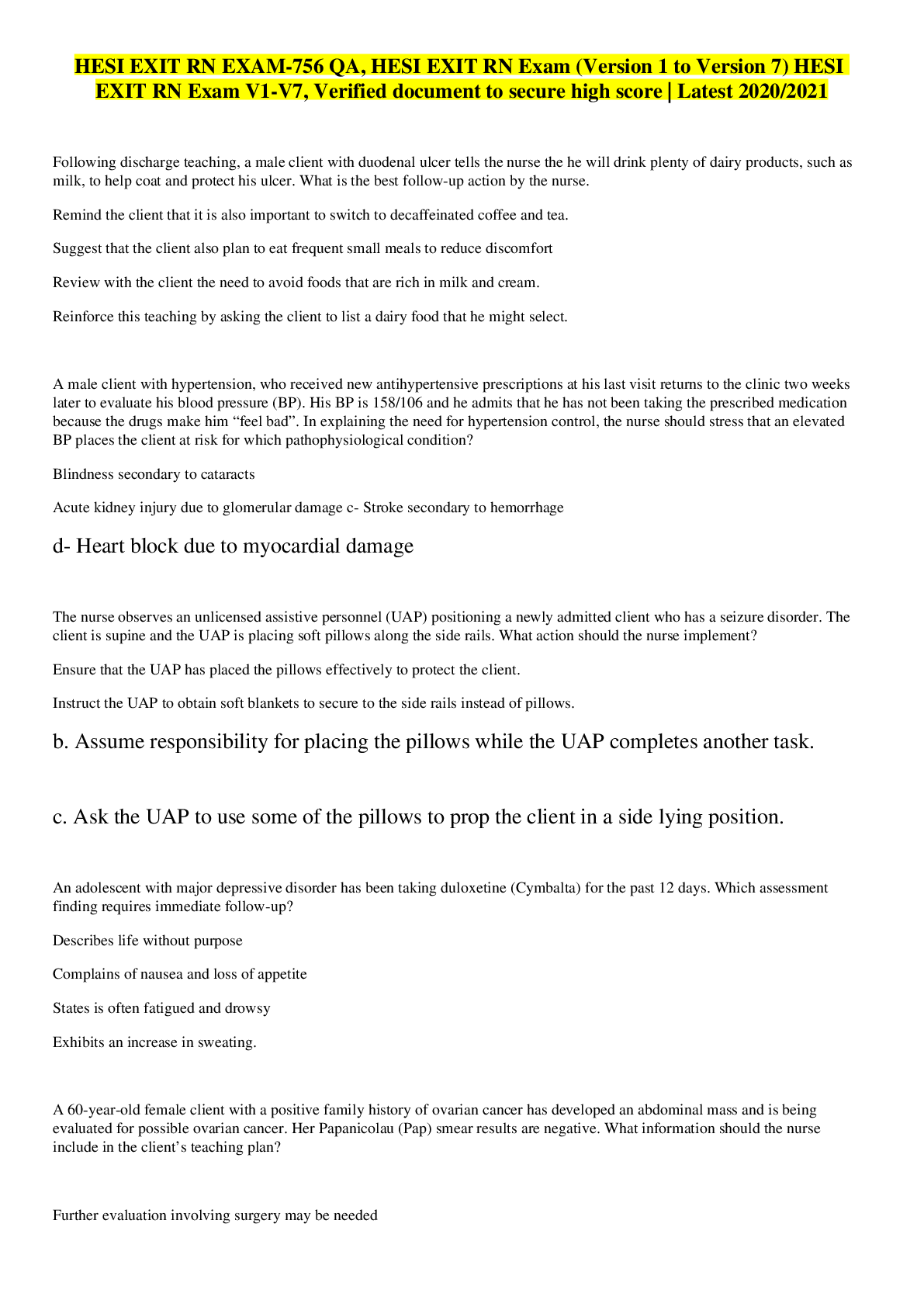
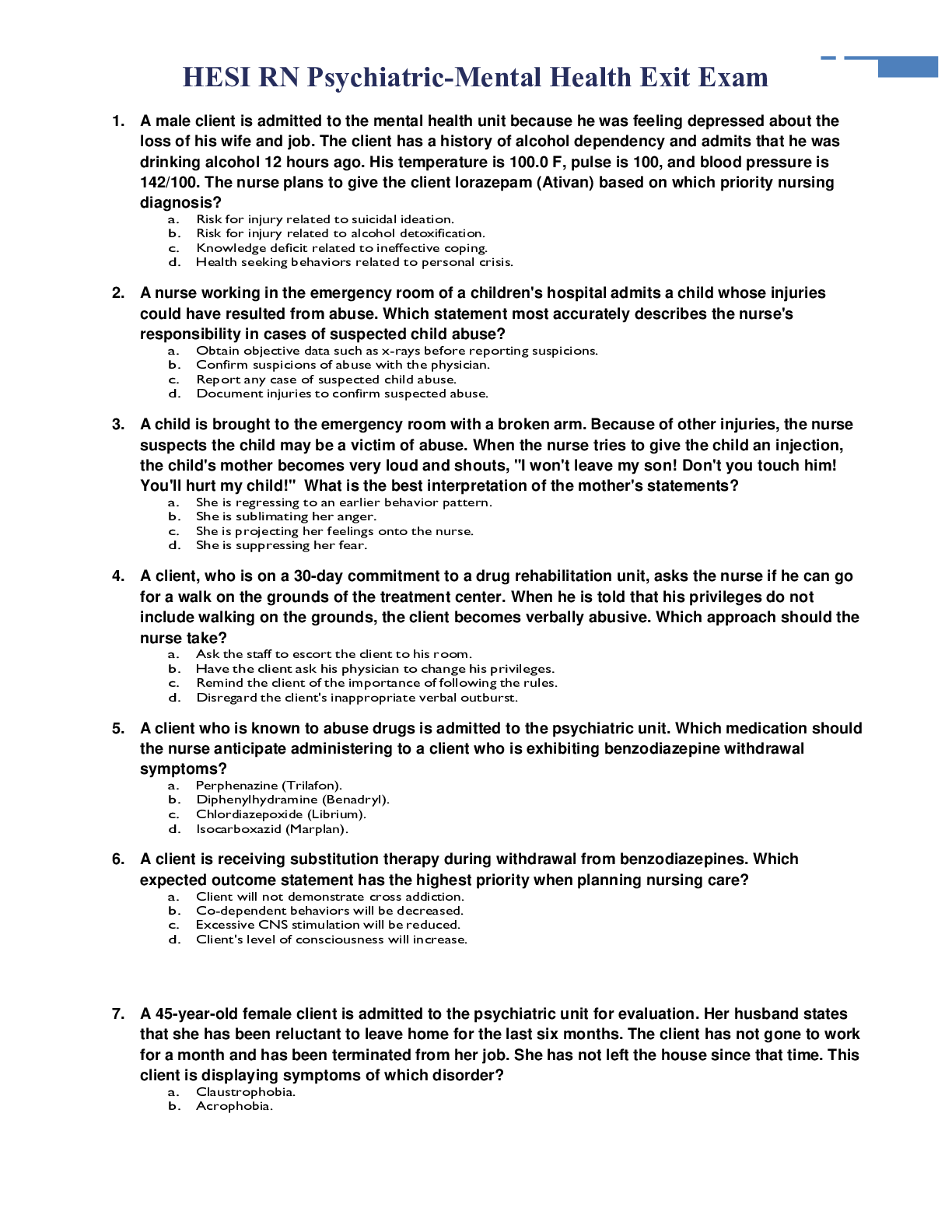
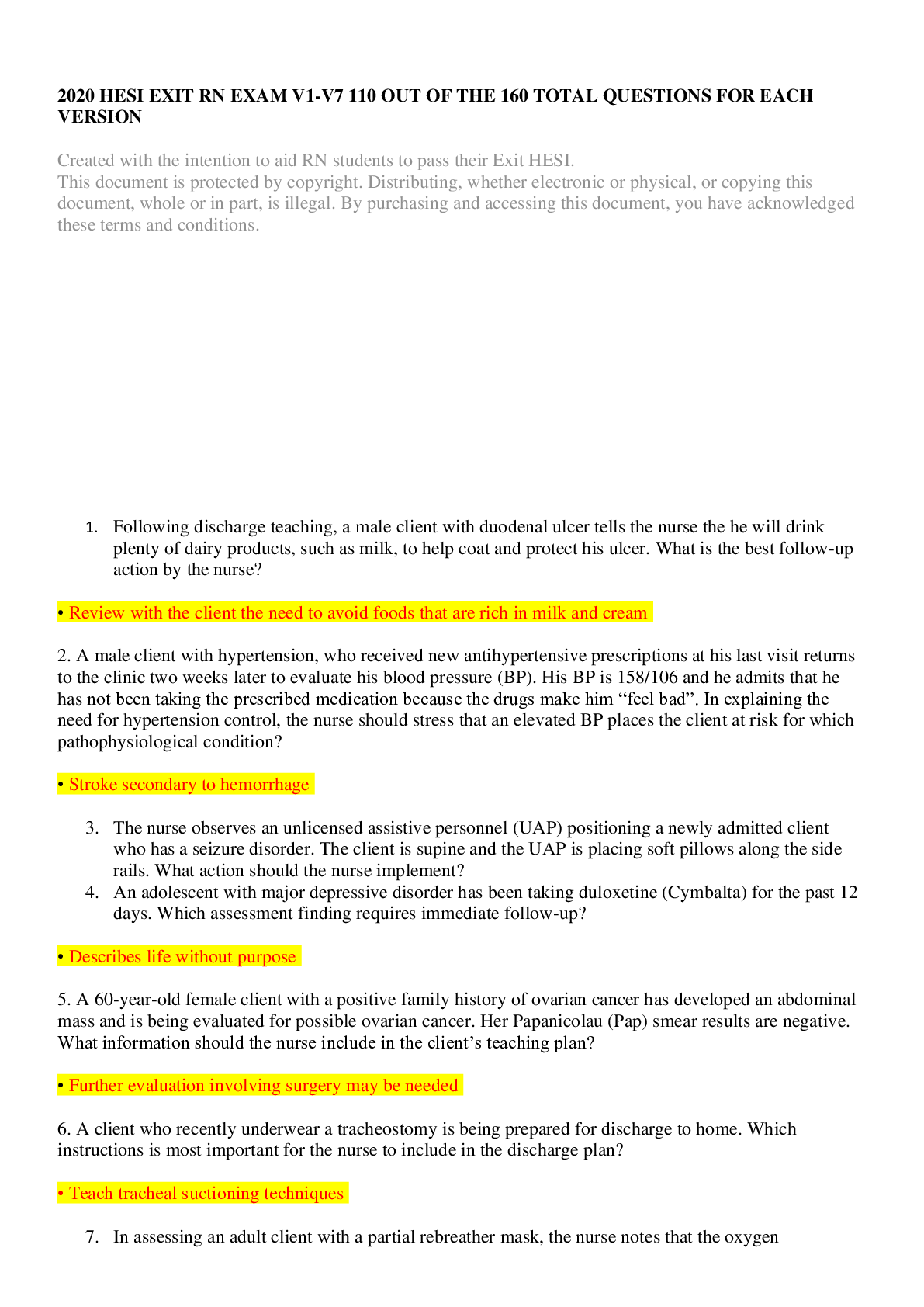
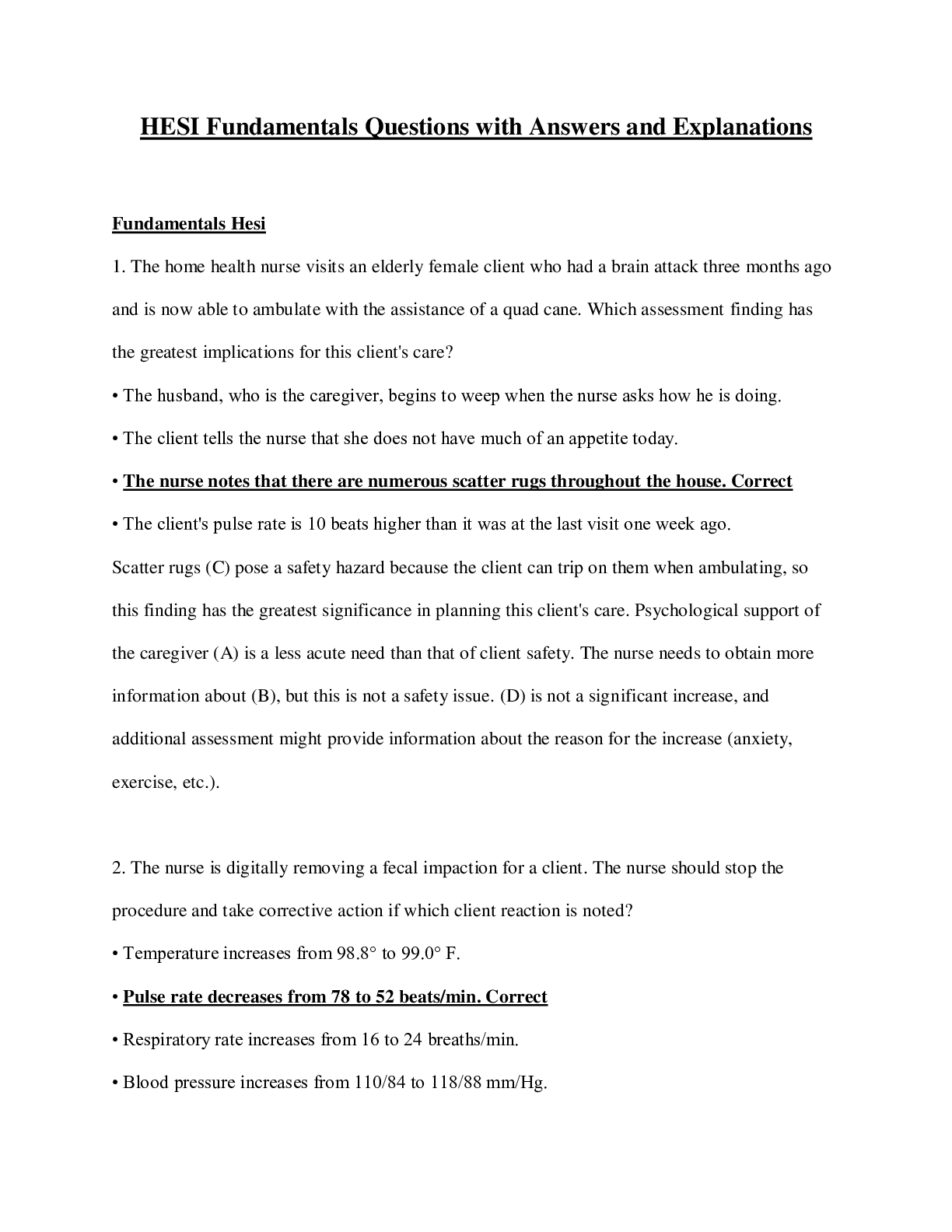
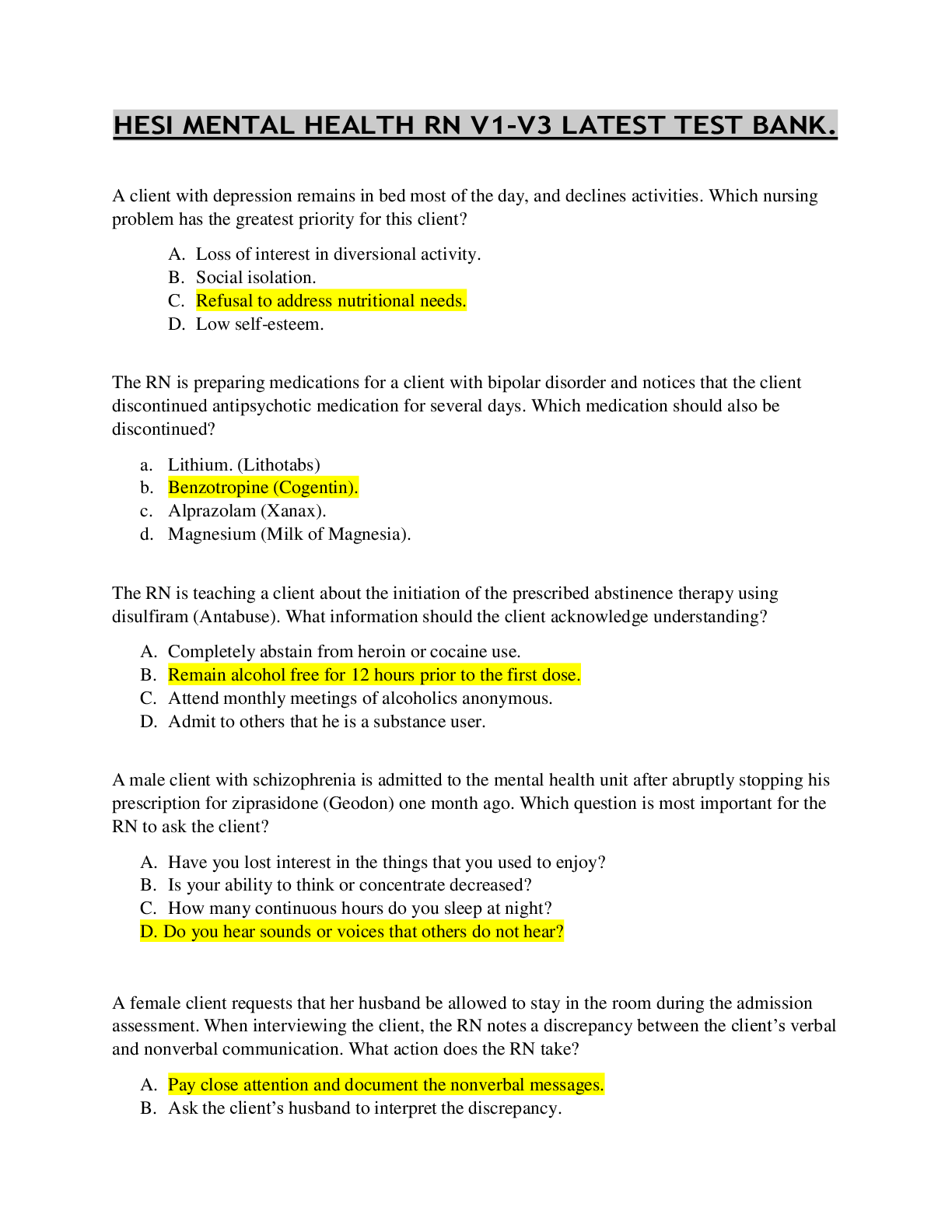

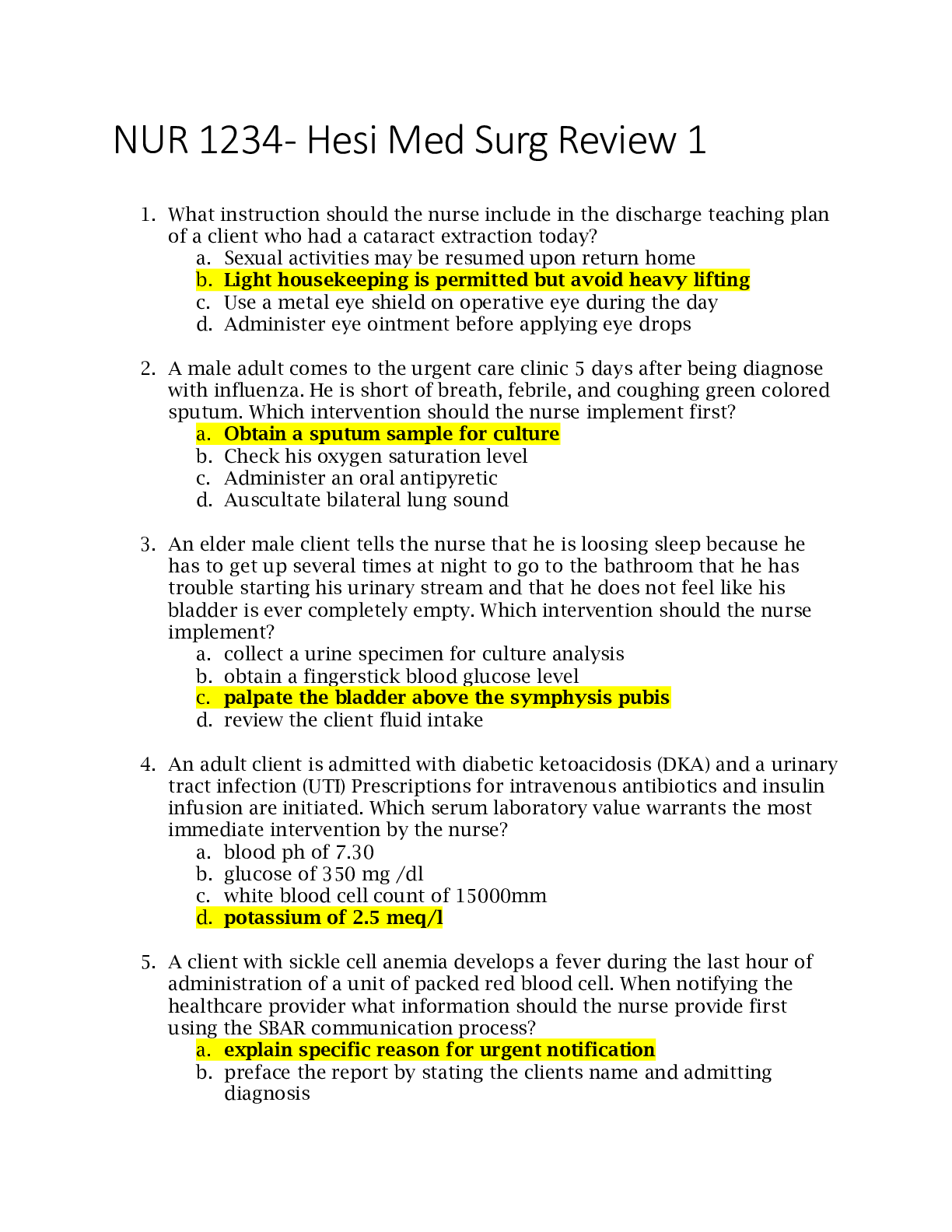
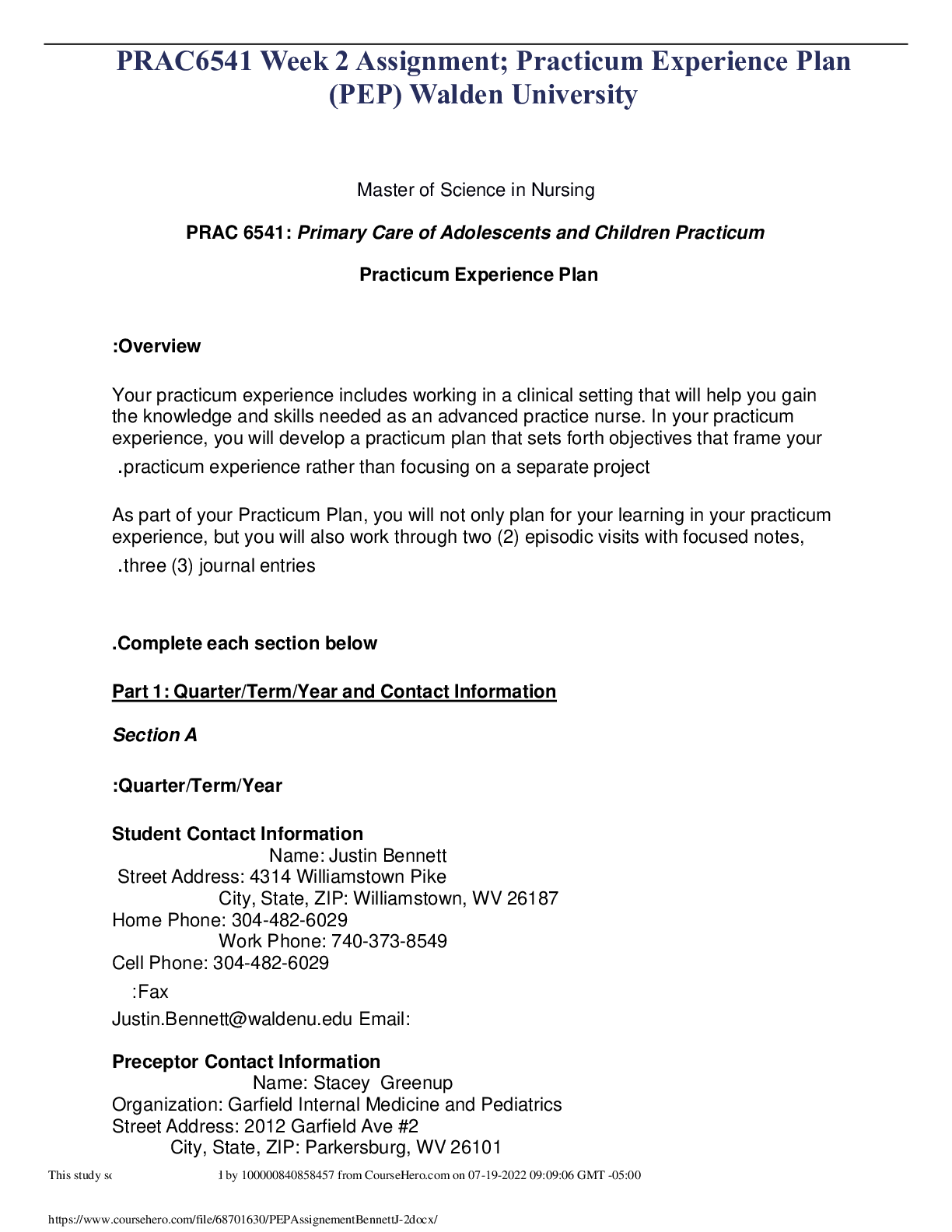
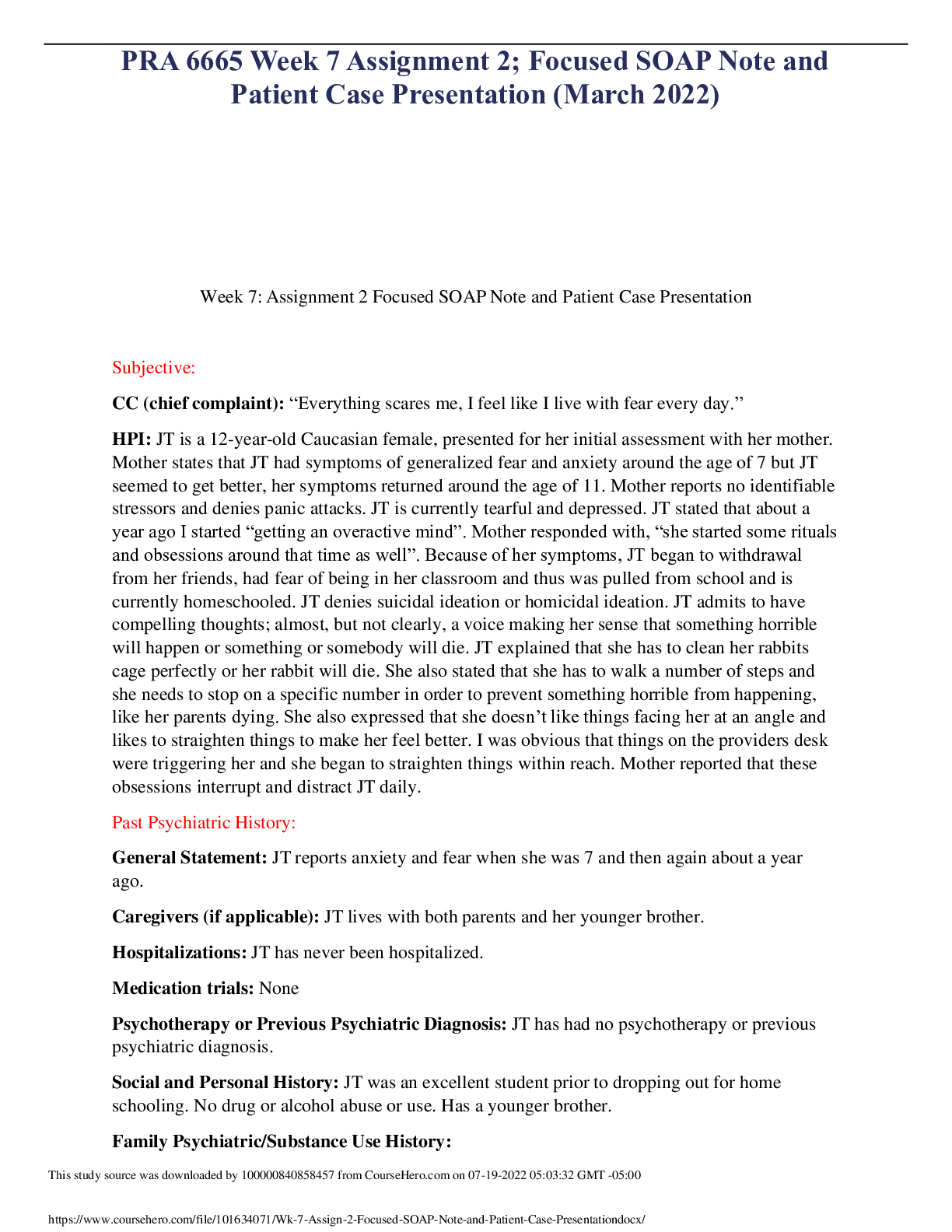

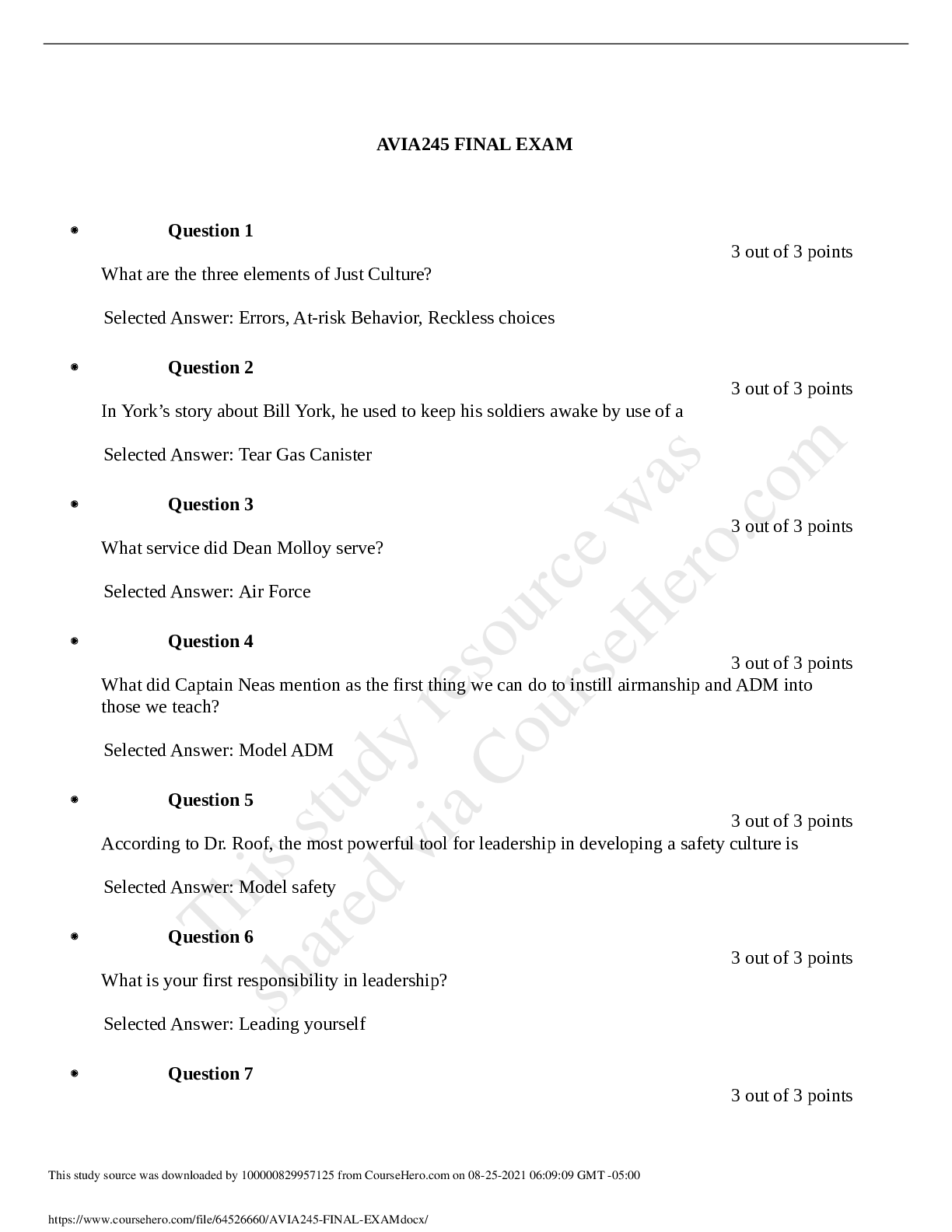

.png)
